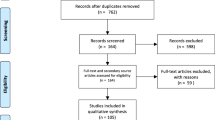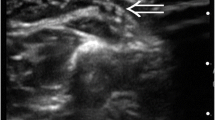Abstract
The dorsal metacarpal veins are frequently cannulated. Cannulation success is determined by several variable anatomic features. The objective of this study is to classify, for the first time, the anatomic variants of the dorsal metacarpal veins. In this cross-sectional study, 520 university students and staff were conveniently recruited. The dorsal metacarpal veins in 1040 hands were studied. Venous visibility was enhanced by either tourniquet application or near-infrared illumination. Variant patterns of the dorsal metacarpal veins were classified. The final analysis included 726 hands, for an exclusion rate of 30 %. Eight pattern types were identified. Three anatomic features informed the variation. Bilateral symmetry of the dorsal metacarpal veins was present in 352 participants (83 % of the total). The overall frequency distribution of variants in both hands was similar (P = 0.8). The frequency distribution of variants was subject to sexual dimorphism (P = 0.001), ethnic variation (P < 0.001), and technical variation (P < 0.001). The anatomic variants of the dorsal metacarpal veins were sorted into decreasingly frequent primary, secondary, and tertiary groups. The groups may signify a progressive increase in difficulty of peripheral cannulation, in the mentioned order. As such, primary patterns are the most common and likely the easiest to cannulate, while tertiary patterns are the least common and likely the most difficult to cannulate. The preceding premise, in tandem with the bilateral asymmetry of the veins, is clinically significant. With cannulation difficulty likely signifying an underlying tertiary pattern, the contralateral dorsal metacarpal veins are probabilistically characterized by a primary pattern and are, as such, the easier option for peripheral venous cannulation.

Similar content being viewed by others
References
Benziane SH, Benyettou A (2016) Dorsal hand vein identification. Int J Comput Sci Inf Secur 14:423–433
Chapman LL, Sullivan B, Pacheco AL, Draleau CP, Becker BM (2011) VeinViewer-assisted intravenous catheter placement in a pediatric emergency department. Acad Emerg Med 18:966–971. doi:10.1111/j.1553-2712.2011.01155.x
Cole TJ (2015) Too many digits: the presentation of numerical data. Arch Dis Child 100:608–609
Dougherty L (2008) Peripheral cannulation. Nurs Stand 22:49–56. doi:10.7748/ns2009.04.23.33.59.c7187
Drake RL, Vogl AW, Mitchell AWM (2010) Gray’s anatomy for students. Churchill Livingstone, Philadelphia, p 770
Hess HA (2010) A biomedical device to improve pediatric vascular access success. Pediatr Nurs 36:259–263
Hoggard J, Saad T, Schon D, Vesely TM, Royer T (2008) Guidelines for venous access in patients with chronic kidney disease. Semin Dial 21:186–191. doi:10.1111/j.1525-139X.2008.00421.x
Horowitz SH (2000) Venipuncture-induced causalgia: anatomic relations of upper extremity superficial veins and nerves, and clinical considerations. Transfusion 40:1036–1040. doi:10.1046/j.1537-2995.2000.40091036.x
Im SK, Park HM, Kim YW, Han SC, Kim SW, Kang CH (2001) An biometric identification system by extracting hand vein patterns. J Korean Phys Soc 38:268–272
Katsogridakis YL, Seshadri R, Sullivan C, Waltzman ML (2008) Veinlite transillumination in the pediatric emergency department: a therapeutic interventional trial. Pediatr Emerg Care 24:83–88. doi:10.1097/PEC.0b013e318163db5f
Kim MJ, Park JM, Rhee N et al (2012) Efficacy of VeinViewer in pediatric peripheral intravenous access: a randomized controlled trial. Eur J Pediatr 171:1121–1125
Kumar A, Prathyusha KV (2009) Personal authentication using hand vein triangulation and knuckle shape. IEEE Trans Image Process 18:2127–2136. doi:10.1109/TIP.2009.2023153
MacGregor P, Welford R (1992) Veincheck lends a hand for high security. Sens Rev 12:19–23. doi:10.1108/eb007880
Nafiu OO, Burke C, Cowan A, Tutuo N, Maclean S, Tremper KK (2010) Comparing peripheral venous access between obese and normal weight children. Paediatr Anesth 20:172–176. doi:10.1111/j.1460-9592.2009.03198.x
Nandini C, Ashwini C, Aparna M, Ramani N, Kini P, Sheeba K (2012) Biometric authentication by dorsal hand vein pattern. Int J Eng Technol 2:837–840
Ogeng’o J (2013) Clinical significance of anatomical variations. Anat J Afr 2:57–60
Rothbart A, Yu P, Müller-Lobeck L, Spies CD, Wernecke KD, Nachtigall I (2015) Peripheral intravenous cannulation with support of infrared laser vein viewing system in a pre-operation setting in pediatric patients. BMC Res Notes 9:463. doi:10.1186/s13104-015-1431-2
Tan PC, Mackeen A, Khong SY, Omar SZ, Noor Azmi MA (2016) Peripheral intravenous catheterisation in obstetric patients in the hand or forearm vein: a randomised trial. Sci Rep 6:23223. doi:10.1038/srep23223
Yammine K, Erić M (2016) Patterns of the superficial veins of the cubital fossa: a meta-analysis. Phlebology. doi:10.1177/0268355516655670
Acknowledgements
This work was supported by the Deanship of Academic Research at the University of Jordan.
Author information
Authors and Affiliations
Corresponding author
Ethics declarations
Conflict of interest
The authors declare that they have no conflict of interest.
Electronic supplementary material
Below is the link to the electronic supplementary material.
12565_2017_403_MOESM1_ESM.pdf
Anatomic variants of the dorsal metacarpal veins as visualized by tourniquet application or near-infrared illumination, in photography (PDF 3191 kb)
Rights and permissions
About this article
Cite this article
Elmegarhi, S.S., Amarin, J.Z., Hadidi, M.T. et al. Dorsal metacarpal veins: anatomic variation and potential clinical implications. Anat Sci Int 93, 238–243 (2018). https://doi.org/10.1007/s12565-017-0403-0
Received:
Accepted:
Published:
Issue Date:
DOI: https://doi.org/10.1007/s12565-017-0403-0




